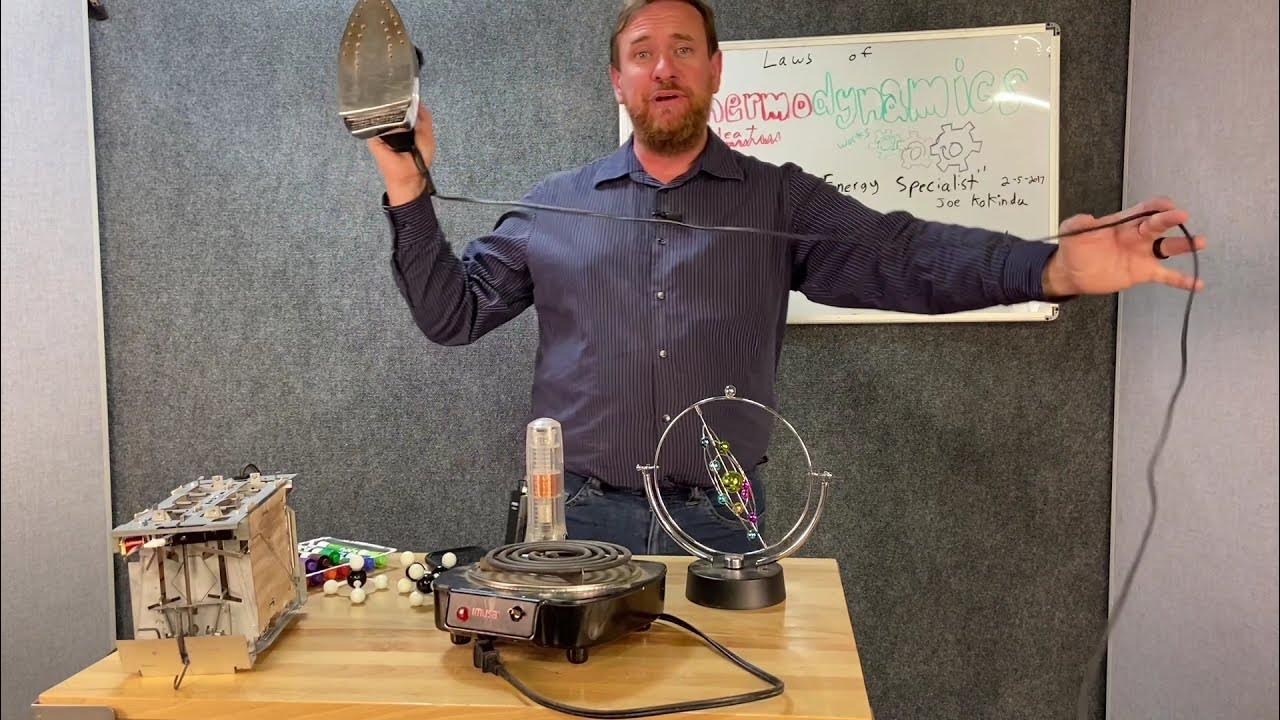Praktikum Sederhana Hukum 1 Termodinamika | Mengapa Balon Yang Berisi Air Dipanaskan Tidak Meletus?
Summary
TLDRIn this engaging video, the hosts demonstrate a simple experiment to prove the First Law of Thermodynamics, which states that energy cannot be created or destroyed but can change forms. The experiment involves two balloons, one filled with water and one without, and a lit candle. The video explains how heat energy from the candle causes the unfilled balloon to burst, while the water-filled balloon absorbs and distributes the heat, preventing it from bursting. The hosts highlight how this experiment illustrates energy transfer between systems, making complex physics concepts easy to understand.
Takeaways
- 😀 Thermodynamics is a branch of physics that studies the transformation of heat energy into other forms of energy.
- 😀 The First Law of Thermodynamics states that energy cannot be created or destroyed, only transformed from one form to another.
- 😀 A system in thermodynamics refers to an object or state under observation, while the surroundings are everything outside the system.
- 😀 The experiment uses balloons, a candle, and a glass to demonstrate the First Law of Thermodynamics.
- 😀 In the first experiment, a balloon without water bursts when placed over a burning candle inside a glass, demonstrating how heat causes the air inside to expand.
- 😀 In the second experiment, a water-filled balloon placed over the candle does not burst, and the candle eventually goes out, showing how water absorbs heat and prevents the balloon from bursting.
- 😀 Heat from the burning candle is converted into chemical, thermal, and light energy, which spreads to the surroundings.
- 😀 The balloon filled with water absorbs and distributes heat more evenly because water has a high heat capacity.
- 😀 The experiment illustrates the transfer of heat energy from one system (the candle) to another (the balloon).
- 😀 The conclusion reinforces the First Law of Thermodynamics, demonstrating that energy is never destroyed but can change forms, such as from the candle's chemical energy to the balloon's thermal energy.
- 😀 The formula for the First Law of Thermodynamics is: heat energy = change in internal energy of the system + work done.
Q & A
What is thermodynamics?
-Thermodynamics is a branch of physics that deals with the transformation of thermal energy into other forms of energy.
What are the three laws of thermodynamics mentioned in the video?
-The three laws of thermodynamics mentioned are: the Zeroth Law of Thermodynamics, the First Law of Thermodynamics, and the Second Law of Thermodynamics.
What does the First Law of Thermodynamics state?
-The First Law of Thermodynamics states that energy cannot be created or destroyed, but can be transformed from one form to another.
What are the two key concepts in thermodynamics explained in the video?
-The two key concepts are 'system' and 'environment'. A system refers to the object or condition being observed, while the environment includes everything outside the system.
What materials are used in the experiment to demonstrate the First Law of Thermodynamics?
-The materials used in the experiment are two balloons (one filled with water and one empty), a candle, a glass, and a matchstick to light the candle.
What happens when a balloon without water is placed over a candle flame?
-The balloon without water bursts when placed over the candle flame, as the heat from the flame increases the pressure inside the balloon, causing it to exceed the material's strength and break.
How does the presence of water in the balloon affect the experiment?
-The water-filled balloon does not burst because water has a high specific heat capacity, allowing it to absorb more heat without increasing in temperature significantly, thereby preventing the balloon from breaking.
What happens to the candle flame when the water-filled balloon is placed over it?
-The candle flame eventually extinguishes when the water-filled balloon is placed over it. This occurs because the water in the balloon absorbs the heat, reducing the temperature around the candle and leading to the flame being put out.
What is the role of energy transfer in the experiment?
-In the experiment, energy transfer occurs from the candle's thermal energy (heat) to the surrounding environment and the materials involved. The heat from the flame is transferred to the air inside the glass, causing it to expand and to the water in the balloon, which absorbs it.
What conclusion can be drawn from the experiment about the First Law of Thermodynamics?
-The experiment demonstrates the First Law of Thermodynamics, which states that energy cannot be destroyed. The heat energy from the candle is transferred to the balloon, causing changes in the system without the loss of energy, thus showing energy transformation.
Outlines

This section is available to paid users only. Please upgrade to access this part.
Upgrade NowMindmap

This section is available to paid users only. Please upgrade to access this part.
Upgrade NowKeywords

This section is available to paid users only. Please upgrade to access this part.
Upgrade NowHighlights

This section is available to paid users only. Please upgrade to access this part.
Upgrade NowTranscripts

This section is available to paid users only. Please upgrade to access this part.
Upgrade Now5.0 / 5 (0 votes)





